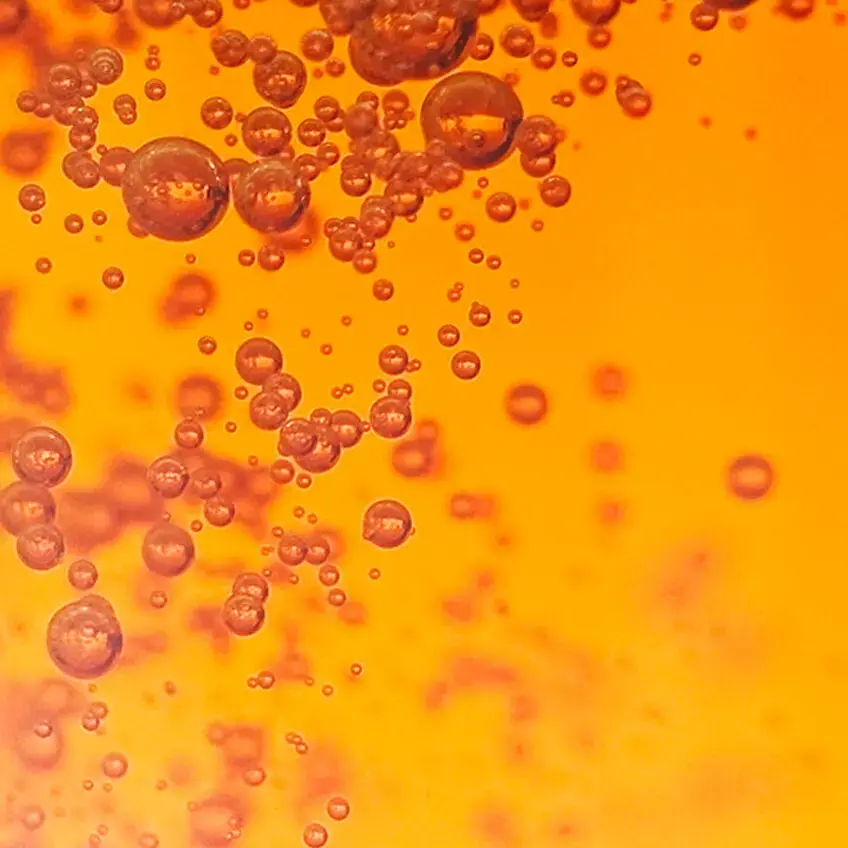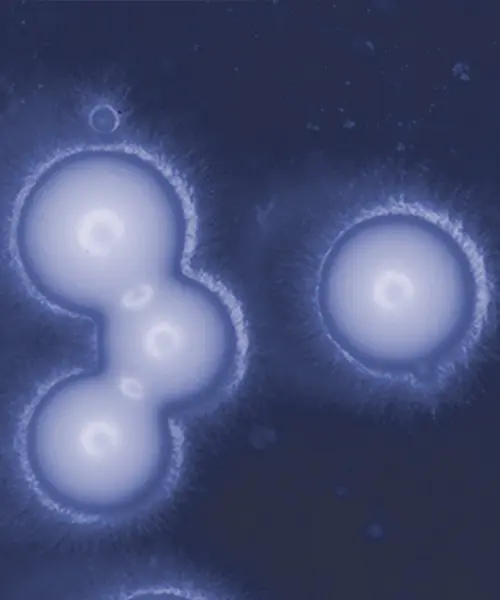
Yeast.
From Our Own Yeast Breeding.
Abstract
You probably know the 4 ingredients of beer, but do you also know why a FLENS is always guaranteed to have the same quality? After reading this article, you'll be the wiser.

The Yeast Influences The Taste.
Our yeast turns FLENS into a “spiritual drink” because it causes the beer wort to ferment. This produces carbon dioxide and alcohol from malt sugar. As yeast also influences the taste of the beer, the Flensburg brewery has its own yeast culture, which comes from a single original cell, so that all yeast culture cells have the same properties. An offshoot of this in-house breeding is stored in the yeast bank in Weihenstephan outside our brewery. This guarantees consistent beer quality.
We distinguish between two types of yeast: the bottom-fermenting yeast, which ferments at 8 to 12 °C, and the top-fermenting yeast for our Flensburger Weizen, which ferments at 15 to 20 °C. However, we now only offer Flensburger Weizen as a draught (and bottled) export beer.
How Yeast Works.
Whether in dough or in beer, yeast always works in the same way: it consists of small fungi that multiply quickly. As a classic leavening agent, it uses metabolic processes in baking to ensure an airy dough and flavor. In beer, on the other hand, it is responsible for alcoholic fermentation, which produces ethanol (the so-called “drinking alcohol”), among other things. For the yeast to work well, it needs food. This is why certain other ingredients are also used: In dough, for example, yeast loves flour and sugar. In beer, it also feeds on sugar - in this case, however, it is not household sugar, but the sugar from the basic ingredient malt.
The Brewing Process: Yeast Produces Alcohol.
No beer without yeast: Once the beer wort has been produced during the mashing process, it is time for the yeast. It is added to the hopped wort and sets the fermentation process in motion. The result: alcohol and carbon dioxide are produced from the malt sugar. In the brewing process, a basic distinction is made between primary fermentation and secondary fermentation; the chemical process takes several weeks in total.
Beer Yeast: There Are These Differences.
Either top-fermenting or bottom-fermenting yeast is used to brew beer. Pilsner FLENS is produced with bottom-fermenting yeast. It ferments at temperatures of around 8°C and is also found in Märzen or Bock beer. By comparison, top-fermenting yeast requires at least 15°C to work and is used for wheat beer or Altbier, for example. Yeast for beer is either dry or liquid. Liquid brewer's yeast is already dissolved in water, while dry yeast is usually in powder form. As with baking, dry yeast is cheaper and much less demanding to store, while liquid yeast needs a cool, dry and dark place.
Yeast In The Purity Law: Four Ingredients To Drinking Pleasure.
It is the basis for beer made in Germany: the Purity Law stipulates, among other things, which ingredients may be used in beer. Nowadays, these are known to be the raw materials barley, hops, water and yeast for the production of bottom-fermented beer. However, the Bavarian Purity Law of 1516 did not include yeast for beer. What was the reason for this? It was presumably believed at the time that yeast did not need to be added, but was created during the beer brewing process.




